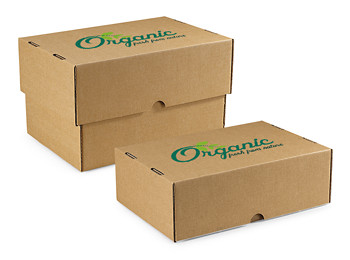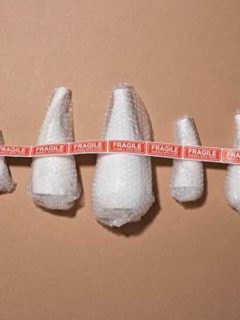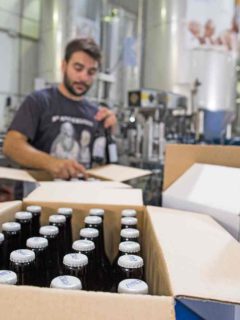Consuming more responsibly has become a priority for a majority of consumers. Recycled products are among the choices to be favoured. Why? Simply because they limit CO2emissions, responsible for global warming. Find out all the benefits of choosing recycled products in this article.
What is a recycled product and what are its benefits
Definition
The purpose of recycling is to process waste materials in order to reintroduce them into the production cycle of new products. Indeed, some materials such as glass, plastic and cardboard can benefit from multiple lives.
They are not thrown away or incinerated, but fed into a waste conversion process. The recycled product is therefore made up of secondary raw materials from the recycling channels.
The benefits of a recycled product
Waste recycling offers many benefits. Indeed, who says recycled product says:
- Less pollution: making new products from waste limits the impact of the production chain on the environment. For example, in France, recycling avoids 5% of annual greenhouse gas emissions. The energy savings, meanwhile, would be equivalent to the production of 18 nuclear reactors.
- Preservation of natural resources: resulting from a continuous production cycle, recycled products limit the use of natural resources. This is because secondary materials from wasteare partly substituted for these resources.
- Competitive advantage: hey yes, because if the environment is at the heart of concerns, consumers have a real preference for eco-friendly products. 75% of French people say they have a good image of a brand using recycled products.
Introducing recycled products into their logistics strategy therefore allows companies to stand out, while taking care of the planet.
Beyond recycled products, discover eco-design
Eco-design, what is it?
Some companies choose to integrate environmental protection right from the design of the product, even before the production chain begins. They thus opt for a sustainable approach called eco-design.
Eco-design allows meeting the expectations of environmentally conscious consumers. Integrating environmental, but also social, consequences into the product’s life cycle then provides significant added value for the company. In particular, it can help to gain market share. Finally, eco-design can have a positive impact on profits. Indeed, the study entitled “The profitability of eco-design: an economic analysis” indicates a profit margin for eco-designed products that is 12% higher on average compared to that of conventional products.
A virtuous circle in 6 steps
Concretely, it is a matter of implementing methods to decrease the environmental impact. The principle of eco-design is to develop a product by imagining a life cycle. This approach therefore takes into account 6 essential stages, namely:
- The design, avoiding the use of non-renewable, non-recyclable, or overly energy intensive materials;
- The extraction of raw materials, opting for extraction and exploitation methods that limit the impact on available resources;
- The manufacturing, optimising energy consumption and implementing good waste management;
- The transportation, in particular by favouring short circuits or less polluting means of transport;
- The use, by proposing, for example, a product running on renewable energy;
- And the end of life, by fighting against programmed obsolescence, or by designing products that are easily repairable.
Thus, eco-design is spreading to all scales. It is a unifying value for today’s companies wishing to concretise their commitment to the planet.
Packaging more eco-responsibly with the 5 R’s of packaging
Aside from recycled products, there are ways to reduce your impact on the environment. To do this, simply activate these 5 levers to reduce waste and best preserve the planet:
- Reduce: adapting packaging to the size of your product allows you to limit the use of cushioning systems and overpackaging. This reduces the weight and volume of packaging for transport.
 |
|
Opt for RAJA custom packaging to the dimensions of your products to reduce the void in your packages. |
- Reuse : why throw away when you can reuse? Round-trip packaging, for example, is designed to be used several times without spoiling.
 |
| The Raja returnable cardboard box allows for easy reshipment with a second adhesive strip for returning products. |
Replace: some packaging has a high environmental impact. Many innovations have emerged to offer eco-responsible alternatives to these polluting packages.
 |
| Made from 70% recycled paper and 100% recyclable, the Raja brown cardboard boxis an excellent alternative to polluting packaging. |
Renew: now, companies are called upon to turn to the use of renewable natural materials or recycled products. Materials can have many lives, so we might as well make use of these already exploited resources.
 |
| Made from sugar cane, the RAJA snack boxis ideal for offering consumers eco-friendly packaging. |
Recycle: if selective sorting has become part of consumers’ habits, it is still necessary to offer recyclable materials. Offering recyclable packaging helps to anchor them in a virtuous, environmentally friendly loop.
 |
| Opt for a 100% recyclable brown cardboard box RAJA to be easily integrated into a selective sorting process. |
At a time when the planet is suffering from global warming, everyone can do something about it. Recycling waste is one of the existing solutions to preserve our environment. Indeed, waste is now an integral part of natural resources. Using recycled products allows us to participate in a greener world, notably by fighting against CO2 emissions. Find the right alternatives to polluting products by choosing from RAJA’s range of eco-responsible products.














